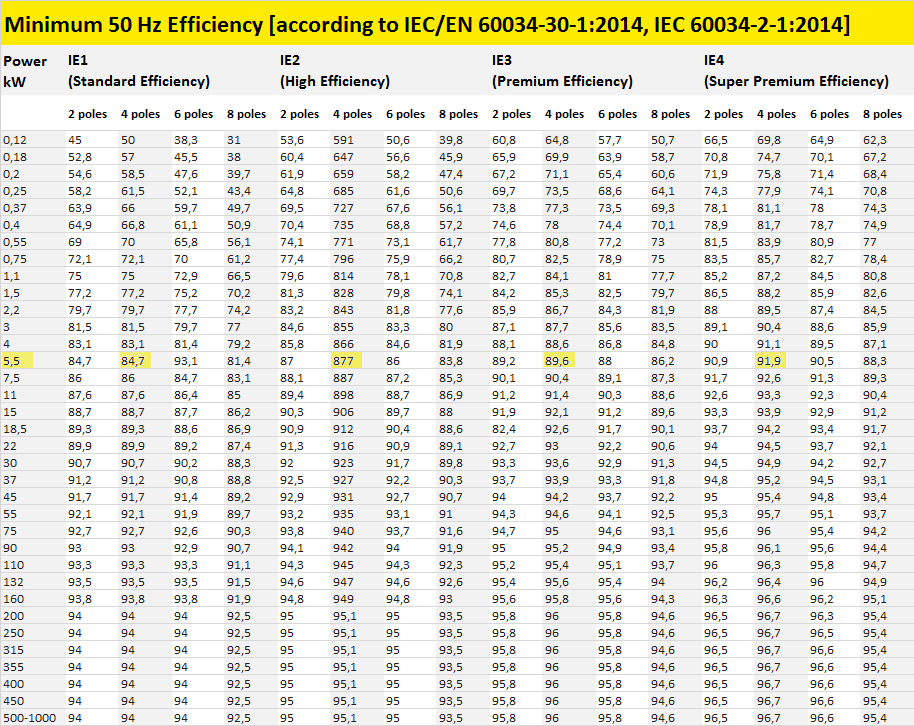Eco Design -Time To Adopt For Efficient Pumps
What is the relevance of Eco Design? Is it high-time to adopt better pumps? Read more to know more.
About eight billion motors are in use around the EU and they use almost half the electricity generated in the EU. This contributes a lot to the total CO2 emissions every year and is a concern as organizations and governments around the world try to tackle climate change. The EU is aiming for a 32.5% decrease in energy use by 2030, and high-efficiency motors and drives will play a key role in achieving this goal. And the latest eco-design requirements specify new efficiency levels for these motors.
The high-efficiency motors and drive use less electricity, which means you’ll benefit from smaller power bills and lower emissions, and with an efficient equipment cooler, it's more reliable and lasts longer. Electric motors have been the focus of eco-design for a few years now, and motors have had to meet or exceed the efficiency class of IE2 since 2011. After January 1st, 2015, the limit was raised to IE3. As an alternative to IE3, manufacturers could sell E2 models, as long as they clearly indicate that it is mandatory to use a frequency converter.
Until July 2021, the regulation of electrical motors and variable speed drives (EU) 2019/1781 entered into the appliance, changing the regulation of eco-design number 640/2009 for electric motors (EC).
Importance of Motor efficiency
Over 40% of the total generated electricity is consumed for industrial uses, and two-thirds of that energy is used by electric motors. By using more efficient motors, it would be possible to realize huge savings in terms of both energy and carbon dioxide emissions. This prompted governments to set mandatory minimum performance levels for electric motors and introduce MEPS (Minimum Energy Performance Standards).
What is motor efficiency and how can you improve them?
Efficiency is the ratio of input power to output power, which is expressed as a percentage. Take a standard motor with an output of 70KW, 75.9KW of power input is required to achieve this output. This translates to 92.2% efficiency. This means that the power loss is 5.9KW. So where do these losses come from and how can they be minimized to increase motor efficiency? There are typically 2 different types of losses; no-load losses and load losses.
The no-load losses are almost constant regardless of the motor load. These include stator iron loss, friction loss, and windage loss. The stator iron loss is caused by the energy required to magnetize the wind material, and also by the losses caused by the eddy currents flowing through the core. They can be reduced by using better and thinner electromagnetic steel and by extending the iron core. Friction losses are present due to the friction in bearings and shaft seals and can be reduced by correct dimensioning and selection of bearings. Windage losses are caused by air resistance in the fans and can be reduced by an optimized fan and airflow design.
There are three types of load losses. First, stator winding losses or I ^ 2R losses are due to the current flowing through the resistance of the stator winding. They can be reduced by optimizing the stator slot design by tightly packing the windings to ensure a good slot fill-in ratio with the optimized iron core to maximize the strength of the magnetic field. The second loss is stator losses. The rotor experiences I ^ 2R losses due to rotor current and iron losses due to magnetic flux interacting with the rotor core. They can be reduced by increasing the length of the conductive bars and end rings and creating lower resistance. The third loss is stray losses due to leakage flux caused by variations in windings, mechanical faults in the air gap, and irregularities in the air gap flux density. They can be reduced by improving slot geometry and reducing air gap variation.
Difference between IE1, IE2, IE3, and IE4
IE stands for International Efficiency, and IEC stands for International Electrical Commission, a universal standardization organization. For motors, the IEC 60034-30-1:2014/IS 12615:2011 standard defines four efficiency classes IE1 (Standard Efficiency), IE2 (High Efficiency), IE3 (Premium Efficiency), and IE4 (Super Premium Efficiency). But the actual efficiency values depend on the motor operating frequency, the number of poles and rated output The efficiency classes simply show that the efficiency of the next series is better than the previous series.

For example, as you can see from the table the efficiency of a motor having the power of 5.5 kW with 4 poles is 84.7 for E1, 87.7 for E2, 89.6 for E3, and 91.9 for E4 respectively.
The new regulation
The revised Commission Regulation (EC) 640/2009 for electric motors was published by the European Union on 25th October. According to the new version(titled Commission Regulation (EC) 2019/1781), companies must follow the IE3 standards instead of using an IE2 motor plus a converter. And the maximum losses for IE2 converters now have to be between 0.12kW and 1000 kW. And from 2023, motors between 75kW and 200 kW have to follow the IE4 standards.
Unfortunately, losses are an inevitable part of running motors, and since they directly affect efficiency, manufacturers of premium motors do their very best to reduce them. With high-quality materials, cutting-edge motor designs, and production in high-precision automated factories, losses are minimized. That is to mention, each successive generation improves motor design and efficiency and contributes to solving some of the worldwide energy challenges.
Unfortunately, losses are an inevitable part of running motors, and since they directly affect efficiency, manufacturers of premium motors do their very best to reduce them. With high-quality materials, cutting-edge motor designs, and production in high-precision automated factories, losses are minimized. That is to mention, each successive generation improves motor design and efficiency and contributes to solving some of the worldwide energy challenges.






c455e5.png)
.png)




No comments yet